What does hazardous wildfire smoke look like?
- Oops!Something went wrong.Please try again later.
This summer will be remembered for being shrouded in a choking haze as wildfire smoke from Canada poured south into the United States and was seen as far east as Northern Europe.
The smoke from Canada’s unprecedented summer spread thousands of miles across borders and oceans – proving particle pollution from fires is far from a regional concern.
“Unfortunately what we’ve seen over the past several years…is that wildfire smoke can travel hundreds to thousands of miles and impact millions of people along the way,” said William Barrett, the national senior director for clean air advocacy at the American Lung Association.
Particle pollution is a “key ingredient” of wildfire smoke, Barrett told CNN. The smallest particles of air pollution, known as PM2.5, can make it harder to breathe, trigger asthma attacks and even bypass the body’s defense mechanisms into the bloodstream, increasing risk of stroke and heart attack, he said.
“Broadly speaking, particle pollution is known to cause premature death,” Barrett said.
It also created apocalyptic-looking skies in some cities.
But while smoke, haze or orange skies might be one indicator of air quality, the visibility of the smoke overhead isn’t as important as the presence of particle pollution at ground level when it comes to respiratory health.
“There are plenty of situations where the smoke is aloft and you can’t see the sun very well and the air quality is at okay levels,” said Clifford Mass, a professor of atmospheric sciences at the University of Washington.
Instead of relying on the appearance of the sky, experts encourage people to use the Environmental Protection Agency’s Air Quality Index, or AQI, to see whether the particulate pollution is unhealthy. At an AQI below 50, the air quality is good. If it’s above 300, it is considered hazardous.
“Sometimes we can see, smell, and even taste the impacts of wildfire smoke,” Barrett said. “Sometimes we can’t see them as clearly.”
Local weather and topography can affect whether that particulate pollution will have an impact, as well as how it appears in the sky.
Hotter temperatures may create a higher risk of wildfires to begin with, and smoke mixes down to ground level more easily in higher temperatures to create poorer air quality, Mass said.
The same winds that can cause a wildfire to more quickly can also rapidly clear the smoke, but changes in the jet stream can result in smoke being carried farther from its origin, said Talat Odman, a principal research engineer who studies air pollution meteorology at Georgia Institute of Technology.
Mountain ranges can shield some regions from worse air pollution by keeping smoke aloft when it travels, Mass said.
And even though two smoke-filled skylines might appear similarly polluted, their air quality can very greatly depending on the weather, the time of day and the amount of particle pollution in the air.
But climate change is supercharging the conditions that wildfires thrive in, which will spread smoke-polluted air to more places.
“It’s really just an indicator that there’s not so much a climate emergency region for wildfires,” Barrett said. “You’re not just going to see those orange skies over Golden Gate Bridge for example. You’re now seeing them over New York City or Washington DC, and it’s really more evidence of the need to take urgent action to reduce our carbon pollution and do everything we can to protect our health when we do have these types of episodes.”
CNN took a look at seven cities that have been affected by wildfire smoke pollution over the last two decades. Here’s what the cities looked like alongside the hourly air quality their residents experienced during the wildfires.
New York City - June 7, 2023
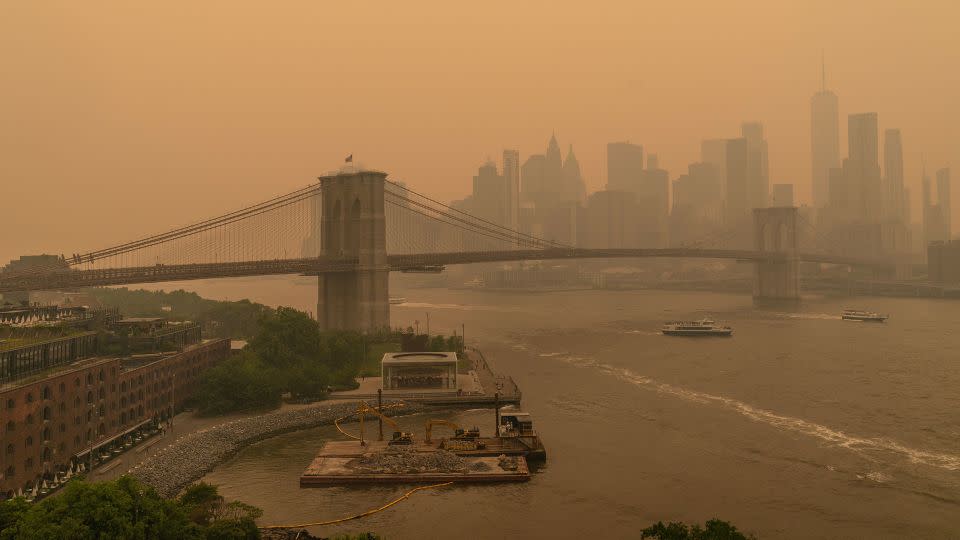
New York City experienced record-breaking levels of PM2.5 pollution on June 7, as the sky was filled with orange haze.
Chicago - June 29, 2023
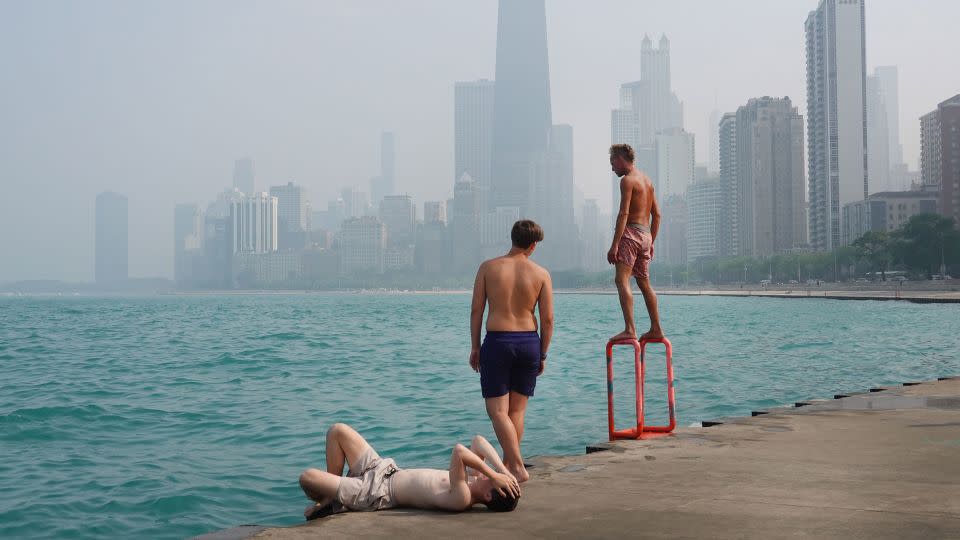
Chicago’s air quality was affected by the Canadian wildfires multiple times over the course of the summer, seeing the worst of it in late June. Later in the summer, the city was hit with more smoke and heat waves as well.
Irvine - Oct. 24, 2007
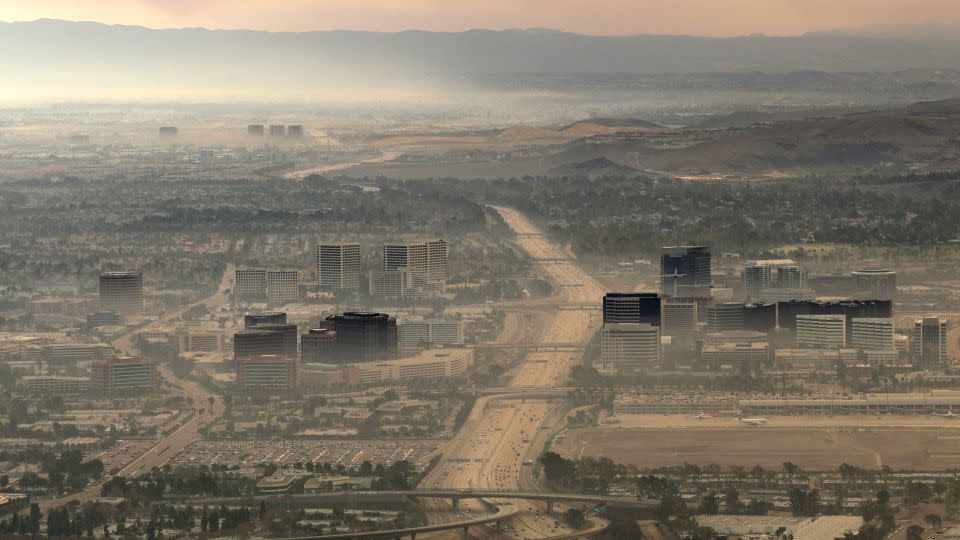
In southern California, dry Santa Ana winds are often blamed for spreading both wildfires and the dangerous particulate matter from their smoke, but some research suggests that they can protect health, particularly along the coast where they blow the pollution particles from populated areas into the ocean.
Pittsburgh - June 29, 2023
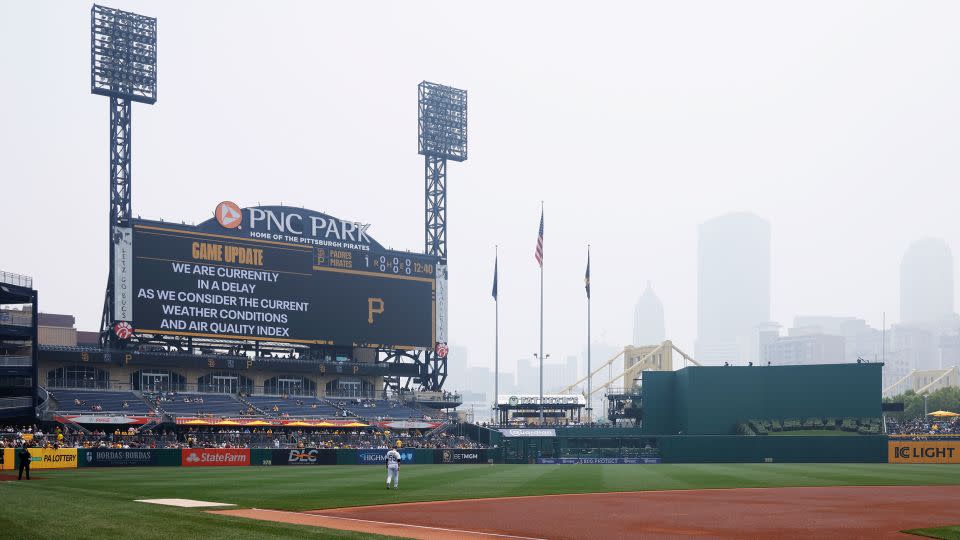
On June 29, the entire state of Pennsylvania was under a “code red” air quality warning, meaning the air was unhealthy. After a 45-minute delay, the Pittsburgh Pirates’ game against the San Diego Padres proceeded despite the health risks, with the Pirates’ Andrew McCutchen wearing a mask.
Sacramento - July 29, 2018
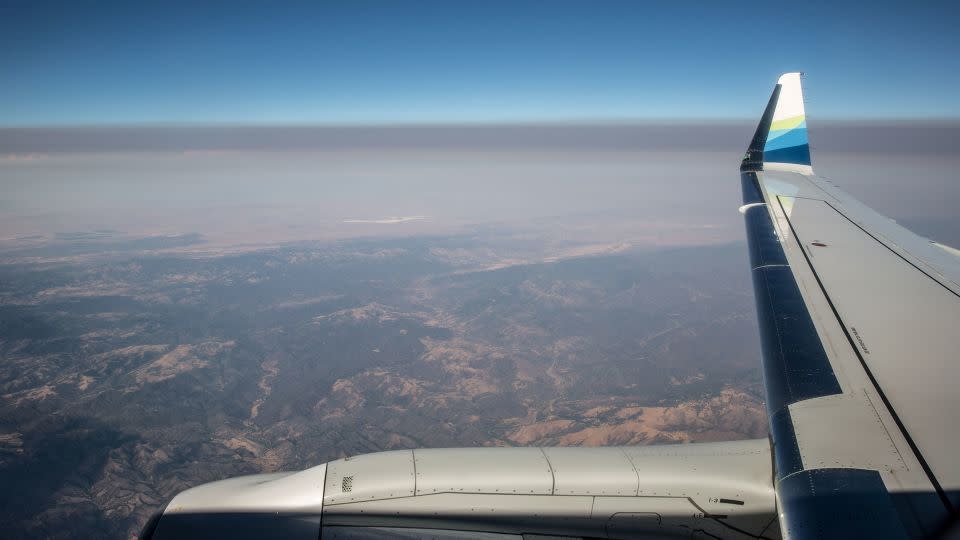
Smoke from Carr Fire in Shasta County, California drifted south to Sacramento, creating moderate to unhealthy air pollution for multiple weeks in late July and August 2018. The fire took more than a month to contain.
San Francisco - Sept. 9, 2020
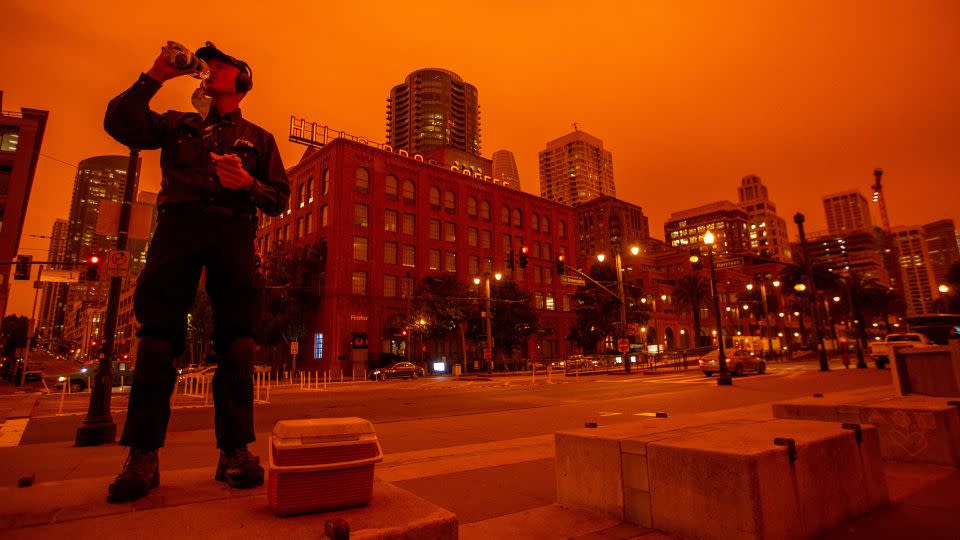
In Sept. 2020, smoke from multiple fires in the region mixed with fog in the San Francisco Bay to create what would be known as the city’s infamous “orange skies day.” Despite the ominous appearance of the skies, however, the 24-hour average AQI in the entire region remained below 100, considered “moderate” by the Environmental Protection Agency
Denver - May 19, 2023
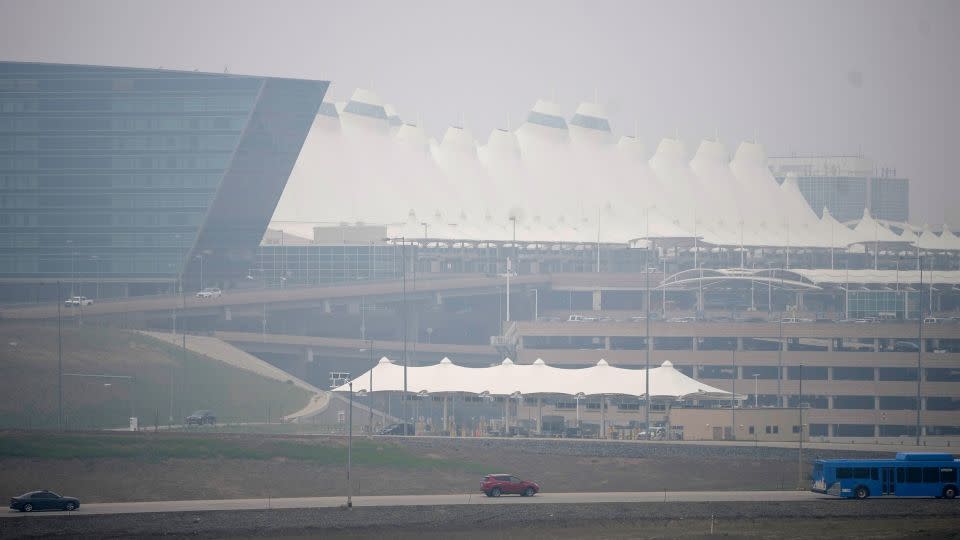
Despite ranking among the world’s least-polluted cities last year, in late May, Denver ranked among the worst cities in the world for air quality, due to smoke from the Canadian wildfires. This isn’t the first time smoke has transformed the city’s typically clean air: In 2021, California wildfires also made Denver one of the world’s most polluted cities.
For more CNN news and newsletters create an account at CNN.com

